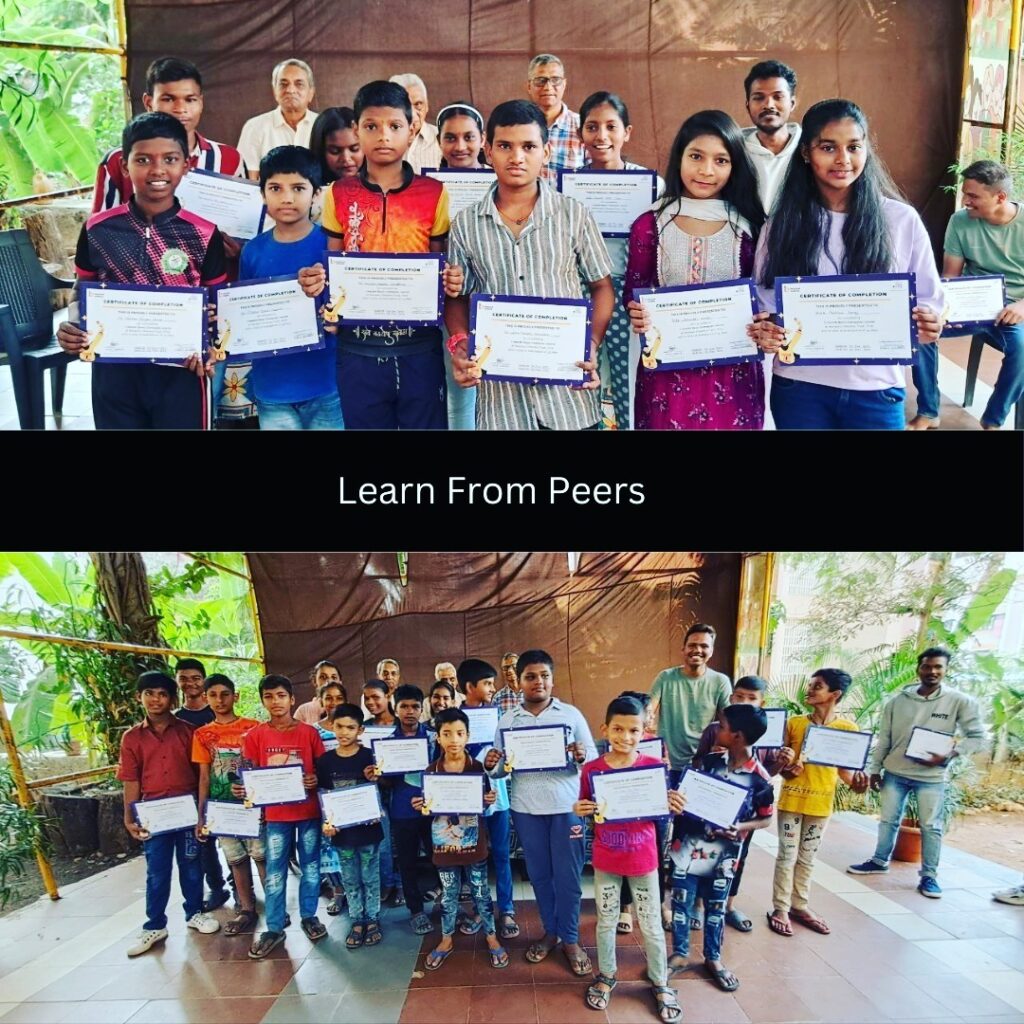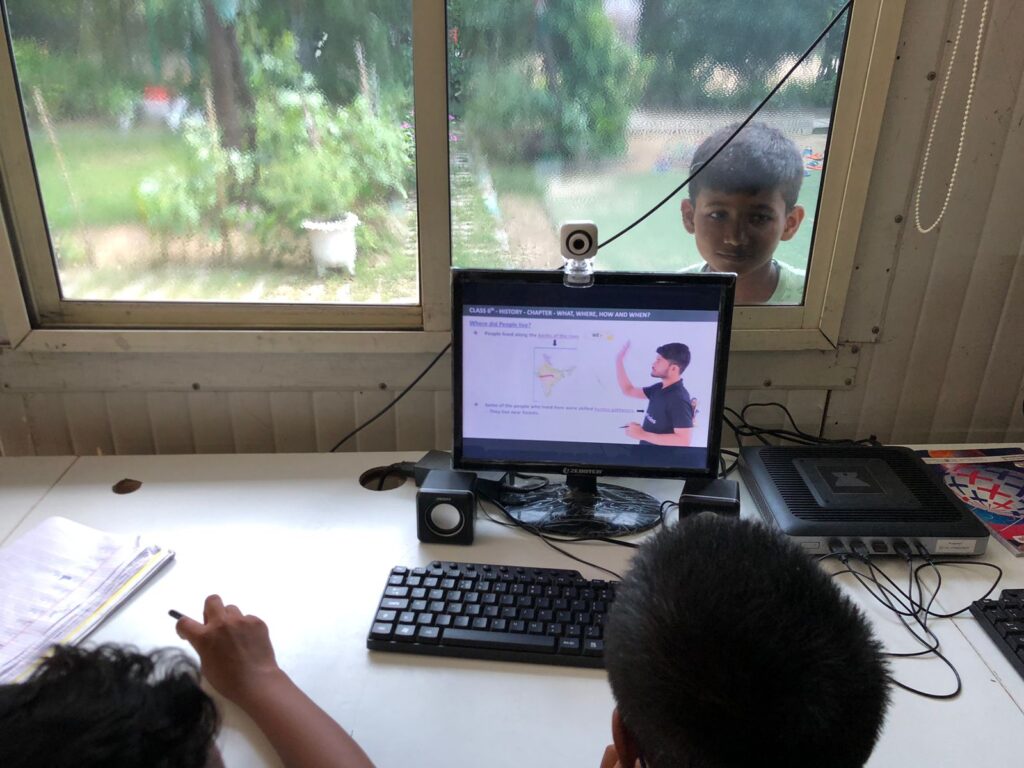ApniPathshala: Enhancing Computer Literacy for Better Education in India

Discover how ApniPathshala is transforming education in India through the power of computer literacy, one student at a time.
Transforming Rural Education: The Journey of Apni Pathshala

Unlocking potential through peer learning: where students thrive and grow together.
Scratch: Empowering Maharashtra’s Students

Unlocking potential through peer learning: where students thrive and grow together.
Computer Literacy in India: Impact of ApniPathshala

Discover how ApniPathshala is transforming education in India through the power of computer literacy, one student at a time.
Why Every Student Should Be Computer Literate in India

Discover why computer literacy is essential for every student in India and how Apnipathshala is making it possible
10 Best Learning Methods To Maximize Kids’ Growth

Community-based learning pods are revolutionizing education by offering a unique and dynamic learning environment. Unlike traditional schools, pods can tailor their approach to each student, fostering a love of learning and maximizing their potential. This blog explores ten powerful teaching methods that can be implemented in your learning pod: 1. Flipped Classrooms: Learning at Your Own Pace Forget the one-size-fits-all approach! Flipped classrooms empower students to learn foundational concepts at home using online resources. This frees up class time for in-depth discussions, problem-solving activities, and personalized support. 2. Game On! Engaging with Educational Games Learning doesn’t have to be a chore. Educational games tap into students’ natural love of play, using competition, rewards, and interactive elements to solidify concepts and boost engagement. 3. Putting Students in Charge: Student-Centered Learning Student-centered learning empowers students to take ownership of their education. By fostering exploration of personal interests and connecting them to broader subjects, this approach ignites curiosity and a deeper understanding. 4. Spark Curiosity: Inquiry-Based Learning Inquiry-based learning encourages critical thinking by posing open-ended questions and challenging students to find their own solutions. This approach fosters independent thought, research skills, and a love for discovery. 5. Learning by Doing: Project-Based Learning Project-based learning goes beyond textbooks. Students tackle real-world problems, developing critical thinking, collaboration, and interdisciplinary skills that will serve them throughout their lives. Problem-Based Learning: A Challenge to Conquer Similar to project-based learning, problem-based learning throws students headfirst into a challenge before any instruction begins. This sparks curiosity and encourages research as they find solutions on their own. 7. The Power of Discussion: Discussion-Based Learning Learning thrives on interaction. Discussion-based learning encourages collaboration and critical thinking as students explore topics from different perspectives. It hones communication skills and promotes independent learning. 8. Learning Through Play: Play-Based Learning for Young Minds Play isn’t just fun; it’s essential for young learners! Play-based learning allows students to develop social skills, explore their curiosity, and build a strong foundation for future academic success. 9. Service Learning: Making a Difference in the Community Service learning blends classroom learning with real-world volunteer work. By tackling community issues, students gain practical experience, develop empathy, and see how academic concepts can make a positive impact. 10. Social-Emotional Learning: Building Well-Rounded Individuals Social-emotional learning (SEL) equips students with the skills they need to navigate both academic and personal challenges. It focuses on self-awareness, emotional regulation, and relationship building, fostering well-rounded individuals prepared for future success. By incorporating these diverse teaching methods, community learning pods can create a dynamic and stimulating learning environment that caters to every student’s unique needs and learning styles. Let’s unleash the potential within each student and foster a lifelong love of learning! Frequently Asked Questions What is a flipped classroom? In a flipped classroom, students learn foundational concepts at home using online resources or other materials. Class time is then used for more in-depth discussions, problem-solving activities, and personalized support. What are the benefits of game-based learning? Educational games can make learning more engaging and interactive, helping students retain information better. They can also promote critical thinking, problem-solving, and healthy competition. How does student-centered learning work? Student-centered learning focuses on the interests and needs of each student. Teachers provide resources and guidance, but students have more autonomy over their learning journey, allowing them to explore topics that spark their curiosity. What is the difference between project-based and problem-based learning? Both methods involve students working on a real-world challenge. Project-based learning often starts with a clear goal or question, while problem-based learning throws students headfirst into a challenge before providing instruction. How can I find resources for these teaching methods? Many online resources and educational organizations offer support and guidance for implementing these teaching methods. Additionally, teacher communities and education conferences can be valuable sources of information. What are the challenges of implementing these methods? Some teaching methods may require additional planning and preparation from teachers. Additionally, creating a supportive and collaborative learning environment is crucial for success. Conclusion:Unleashing Potential and Igniting a Passion for Learning Community learning pods offer a unique opportunity to revolutionize education. By implementing these ten powerful teaching methods, you can create a dynamic and engaging learning environment that caters to each student’s individual needs and learning styles. From the personalized approach of flipped classrooms to the collaborative spirit of discussion-based learning, these methods foster a deeper understanding, critical thinking skills, and a love of learning that will stay with students throughout their lives.Remember, the ultimate goal is to empower students to take charge of their education, explore their passions, and develop the well-rounded skills they need to thrive in the real world. So, embrace the flexibility of community learning pods, unleash the potential within your students, and ignite a lifelong passion for learning together! Developed by Pranav Gorathe
Apni Pathshala’s Vision for a Skilled Youth in Uttar Pradesh

Apni Pathshala, a pioneering initiative in Uttar Pradesh, is equipping the youth with digital skills to bridge the digital divide and empower them.
Tinkercad: 3D Modeling in 10 Days

Unlocking potential through peer learning: where students thrive and grow together.
The Power of Self-Learning: Unleashing Your Potential

Discover how self-learning can unlock your potential and empower you to achieve your goals independently.
Unlock Yourself: The Power of Self-Mastery

Unlocking potential through peer learning: where students thrive and grow together.
